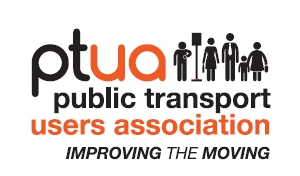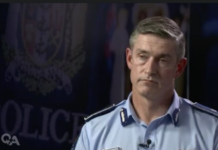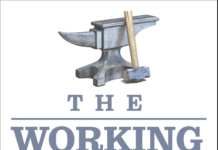
The Government’s recent announcements that they are to accelerate the procurement process for light rail to the airport and to the NorthWest including Kumeu, exaggerates the viability of the project says the Public Transport Users Association.
Funding tools on offer such as the New Zealand SuperFund and the new regional fuel tax are beguiling, but don’t make light rail the best choice, says PTUA chair Christine Rose. “For both the airport and Kumeu, heavy rail services offer better value for money and faster delivery”.
“We’re worried decision makers are beguiled by new funding tools, into pursuing more expensive options than necessary”. “Plans for light rail to the west are based on unrealistic timeframes, and reduce communities, topography, coastal areas and existing infrastructure constraints to simple bold lines on maps where nothing – not finances, timing, election cycles, or practicalities can stand in the way”.
“Plans for light rail ignore existing lines on the railway network, in particular, the North Auckland Line beyond Swanson and out through Kumeu; which local communities and advocates argue should be revived for passenger services in advance of expensive new light rail on a whole new corridor”.
The Public Transport Users Association’s ‘Trains to Huapai’ campaign supports regular rail passenger services beyond the current Swanson terminus, using lines, rolling stock and stations that already exist. The campaign has the support of local boards, councillors and communities in Rodney and Waitakere.
Mrs Rose, a Kumeu local, says “new and old growth in the area is oriented around rail, but sits like a bride without a groom”. “People lured to the area by the apparent benefit of a railway line are surprised and appalled that no services run. In every consultation by Auckland Transport, Auckland Council and the Rodney Local Board, calls for trains to Huapai are a clamour”.
The Trains to Huapai campaign also has support from Swanson residents swamped by commuters from the far west driving over the Waitakere hill to catch the train from the new and now full Swanson Park and Ride. Waitakere township’s refurbished park and ride sits empty since rail services stopped in 2015.
“It’s a clamour that’s ignored by the powers that be, preferring a hypothetical, un-costed, light rail service that no-one really believes will reach Kumeu any time soon”.
The Minister of Transport, Urban Development and Housing, Phil Twyford, suggests the Kumeu valley could accommodate another 20-30,000 houses. He argues for the removal of the Rural Urban Boundary, inaccurately perceiving that it’s an impediment to growth. Special Housing Areas fast-tracked by the previous Government have brought thousands of new residents to this already growing peri-urban zone. Transport routes have become immobilised by the influx of vehicles arising from the housing boom. The 18,000+ vehicles a day through Kumeu, are doubled in the weekend, and traffic on the one-lane-each-way State Highway 16, is stationary in both directions at many times of night and day.
A survey just conducted by the Public Transport Users Association conservatively estimated social and economic congestion costs to Kumeu commuters of four million hours a year and $30million.
The plans for light rail along the North Western corridor promise services within an improbable six year time frame, and combined with the questionable proposition of light rail to the airport, come to a conservative estimated cost of $6billion.
PTUA co-ordinator, Jon Reeves, says the most-cost effective modes, heavy rail to Kumeu and the airport, should be pursued, especially now the price of fuel is at an all-time high – even before the new regional fuel tax to pay for it all, is applied. “Just because we can, doesn’t mean we should spend more money than we need to. The regional fuel tax and use of the SuperFund still come at a cost”. He says transport lobbyists Greater Auckland oppose the use of the existing rail line to Kumeu. “They say, ‘it’s too expensive’; ‘no one would use it’; ‘people don’t all go into the city to work”; “The Waitakere tunnel is too narrow”. Yet they accept at face value, the creation of a whole new rapid transit corridor with an unrealistic timeframe, which entails ripping up just-laid motorway lanes, massive added community severance, the destruction of houses, sports fields, school precincts, reserves, the coastal marine area and existing infrastructure to create a transport corridor at least 15 lanes wide in part”. “Other than following the existing State Highway in a swathe, the route is unclear, as is how to retrofit NorthWestern light rail into the constrained central city. Feeder routes and services from NorthWest suburbs would still also be required”.
Mrs Rose says “With technology and enough money, of course anything is possible”.” But using existing, dedicated rail corridors must be cheaper, and a better fit with the government’s claimed support for regional rail renewal – even including the costs of widening the Waitakere tunnel (not essential) and investing in improved or additional diesel rolling stock. Even electrifying the North Auckland Line to Kumeu from Swanson must be cheaper than a whole new light rail line”.





The government if they don’t know it already, dosnt want to import an energy crises,so we select one of a few loco manufacturers from The Chinese Heavy machine comapany up to Gernmanies Siemens. Now what? Do we burn more coal? Do we dam more rivers? Or burn more deisel. Totally worthless,
What the government wants to do is import the whole value chain, we want IP, companies not willing to hand over IP certs for design modifications and integration are just looking to con you on the maintenance side of things. Instead of working on expanding legacy energy sectors we have to integrate legacy infrastructure with modern infrastructure. Trial new materials, new energy sources and design specs.
I often wonder why designing train sets exite me so much and make other people so, annoying. But any way, rail is one of the central pillars of this governments right to rule. Screw it up and it’s over. Finished. Faneto, may as well learn Chinese. 再见
but don’t make light rail the best choice, says PTUA chair Christine Rose. “For both the airport and Kumeu, heavy rail services offer better value for money and faster delivery”.
Agreed Christine why niot make an “all purpose rail” system since even today in the Napier paper kiwirail CEO is even today saying rail must be good for local economies and industry/bussiness as well as lower the safety issues by using heavy rail as freight and passenger services.
KiwiRail chief executive Peter Reidy said having work trains running is an important part of getting the line open to shift logs by rail by the end of the year.
quote; Reidy;
“This is an important project for the region, for New Zealand and for KiwiRail.
“It lifts the regional economy. It makes the roads safer by taking logging trucks off roads that were not designed to cope with growing volumes.
“It helps the environment by cutting carbon emissions.”
KiwiRail has estimated that using the Wairoa-Napier line to move the logs could take up to 5714 trucks a year off the road and cut carbon emissions by 1292 tonnes.”
read this;
https://www.nzherald.co.nz/rail/news/article.cfm?c_id=296&objectid=12062894
HAWKE’S BAY TODAY
KiwiRail on track for first train along Napier to Wairoa line next week
2 Jun, 2018 6:00am
Trains will be moving again on the Napier to Wairoa line. Photo / File
Hawkes Bay Today
The first train in six years will be chugging along the Napier to Wairoa railway line next week.
A work train will travel from Napier to Eskdale delivering ballast on Wednesday morning as part of the project to reopen the line.
KiwiRail chief executive Peter Reidy said having work trains running is an important part of getting the line open to shift logs by rail by the end of the year.
“This is an important project for the region, for New Zealand and for KiwiRail.
“It lifts the regional economy. It makes the roads safer by taking logging trucks off roads that were not designed to cope with growing volumes.
“It helps the environment by cutting carbon emissions.”
A letter was sent to properties neighbouring the track recently to remind people to take care around the line.
“Because it has not been in use by trains, people need to be aware that trains will now be on the line, and they need to be looking out for them,” Reidy said.
The letter, from KiwiRail communities engagement manager Gill Evans, asked for people’s help spreading the safety message to their communities.
“The rail line has been closed for a number of years and we need to make sure people have not become complacent around the railway,” it said.
A ceremony to mark the return of trains will be held at KiwiRail’s operations depot in Ahuriri at 11am on Wednesday before the first train leaves for Eskdale.
People wanting to see the train pass would have good vantage points from Meeanee Quay and Domain Rd at about 11.30am.
The line, which will be used to transport logs to Napier, is being reopened by KiwiRail using $5 million of funding from the Government’s Provincial Growth Fund.
The work is expected to take two years to fully complete.
KiwiRail has estimated that using the Wairoa-Napier line to move the logs could take up to 5714 trucks a year off the road and cut carbon emissions by 1292 tonnes.
The Hawke’s Bay Regional Council, Napier Port and KiwiRail entered into a commercial agreement in 2016 to reopen the line for the first time since it closed in 2012.
The line was mothballed after a section of track at the Beach Loop area was badly damaged in a storm earlier that year.
As part of the agreement, Napier Port intended to run a dedicated log service from Wairoa to Napier Port.
That was expected to start in the last quarter of last year but the regional council last year said it had not been possible to source enough logs to make the line economically viable.
end
Comments are closed.